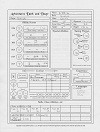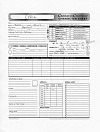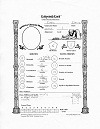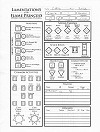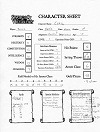When I originally ran this game, I envisioned Elizabeth Sector being "north" of the Hydra sector. Not all of it was written up because at the time I assumed I would make up most of it as I went along, but the game in which Elizabeth Sector was created also only lasted three sessions.
The dot with a ring denotes the presence of a gas giant, good for refueling starships.
The little dotted lines are major trade routes between planets, essentially routes where ships are coming in and out of the system every day.
The thick blue line is the extant of the Empire's claimed space.
0000 Titan XI, Tags: Major Spaceyard, Pretech Cultists
0003 Loh, Tags: Area 51, Seismic Activity
0005 Caeli, Tags: Tyranny, Warlords
0007 Benz (Empire), Tags: Heavy Mining, Psionics Academy
0008 Babel (Empire), Tags: Hatred, Preceptor Archive
0101 Simyst, Tags: Feral World, Xenophobes
0104 Cromwell (Empire), Tags: Seagoing Cities, Forbidden Tech
0105 Stoker (Empire), Tags: Sectarians, Seismic Instability
0108 Berlanga (Empire), Tags: Radioactive World, Local Specialty
0200 Thrasja, Tags: Freak Geology, Abandoned colony
0203 Mand'gol, Tags: Eugenic Cult, Outpost World
0204 Hawking (Empire), Tags: Pilgrimage Site, Colonized Population
0206 Rhodesia (Empire), Tags: Psionics Worship, Pilgrimage Site
0207 Zahteras (Empire), Tags: Feral World, Area 51
0300 Calcitron, Tags: Radioactive World, Xenophiles
0302 Ethoevest, Tags: Pretech Cultists, Freak Weather
0303 Ningxia, Tags: Perimeter Agency, Primitive Aliens
0305 Victoria (Empire), Tags: Major Spaceyard, Tyranny
0306 Elizabeth (Empire Capital), Tags: Exchange Consulate, Heavy Industry, Seat of Government
0307 Churchill (Empire), Tags: Regional Hegemon, Restrictive Laws
0309 Sceptri, Tags: Gold Rush, Cold War
0400 Orteck, Tags: Tyranny, Freak Weather
0402 Jeth, Tags: Psionics Academy, Pilgrimage Site
0404 Darwin (Empire), Tags: Xenophobes, Major Spaceyard
0406 Cedon (Empire), Tags: Trade Hub, Local Tech-energy weapons
0408 Cleese (Empire), Tags: Badlands World, Abandoned colony
0503 Morgan, Tags: Quarantined World, Seismic Instability
0505 New Rhodesia (Empire), Tags: Feral World, Tomb World
0507 Turing (Empire), Tags: Eugenic Cult, Altered humanity
0600 Verona, Tags: Radioactive World, Seismic Instability
0602 Danusdor, Tags: Major Spaceyard, Theocracy
0603 Quen, Tags: Altered humanity, Freak Weather
0605 Arena (Empire), Tags: Oceanic World, Out of Contact
0606 Tyndale (Empire), Tags: Major Spaceyard, Tyranny
0609 Yi Xiu, Tags: Unbraked AI, Eugenic Cult
0700 Orden, Tags: Hostile Biosphere, Warlords
0701 Tantis, Tags: Hostile Space, Secret Masters
0703 Paven, Tags: Desert World, Primitive Aliens
0704 Steed, Tags: Badlands, Freak Geology, Pilgrimage
0708 V'Opon, Tags: Cold War, Tyranny
This closeup shows the only planets I wrote up details for, even though I charted and named about 40 planets in the whole sector. I generated tags for the other planets, but did nothing else. I also borrowed the Law and Starbase levels from classic Traveller.
0305 Victoria (Empire)
Atmosphere: Breathable
Surface Water: 20%
Weather/Climate: Temperate/Normal
Biosphere: Miscible
Population: 6 billion (Tech 4)
Tags: Major Spaceyard, Tyranny
A wealthy agricultural world, Victoria is a small but industrious world. The planetary government allocates the use of industrial resources in order to supply the Empire with its fleet. The people of Victoria dwell in superskyscrapers connected via a network of subways and enclosed elevated trains, known as the Tunnels.
Victoria was the first world to be settled post-Scream by travelers from Elizabeth. The world was sufficiently habitable to allow the colonists to establish a home and spread out to what became the other nearby worlds as their numbers grew. For this reason the people of Victoria have always considered themselves the original and best of the colony worlds.
Victoria produces most of the warships used throughout the Empire. Conditions in Victoria's industrial citis are rather grim, with unrest common among the workers.
Law: Controlled. Many laws exist; most are for the convenience of the state. Only light weaponry may be owned and licenses are required. Broadcast communications and print are regulated.
Starbase: A Class - in orbit
A crossroads of the Empire on par with Elizabeth and Cedon. Hundreds of passngers and cargo containers go through Victoria's space every day. Hundreds of travelers find a temporary home here, either waiting for an interstellar connection, a shipboard job, or just a working passage to Somewhere Else. There are plenty of luxury hotel rooms, but also cheaper hostel space. There are high-end retailers and elegant dining establishments, but also more more varied budget options as well.
0306 Elizabeth (Empire Capital)
Atmosphere: Thick, tainted by industrial pollution
Surface Water: 55%
Weather/Climate: Temperate/Normal
Biosphere: Miscible
Population: 9 billion (Tech 5)
Tags: Exchange Consulate, Heavy Industry, Seat of Government
Elizabeth has been the most important world in the sector for the last 500 years, and it prides itself on being an island of decency, consistent economic growth, and the stable seat of galactic government. There is growing unrest in the sector, as the Silence fades more and more worlds with unsavory elements are being adopted into the expanding borders of the Empire. No single world poses a threat to Elizabeth, or the Empire as a whole, but some whisper that it’s only a matter of time before a coalition of independent worlds bands together to stop the inevitable encroachment.
A strong segment of the Galactic Senate is arguing for a wider outreach to the other worlds of the sector, insisting on exploratory missions to revive old drill routes and rediscover the half-legendary stars marked on maps that were current six centuries ago. This “Scout faction” is currently overruled by the dominant “Law faction”, one that wishes to concentrate on internal development and securing harmony on their own world first. Law and government on Elizabeth is reasonably fair and open, but there remain vast gulfs between the poorest and richest on the world. Many of the more impoverished are tempted to seek salvage permits, gaining permission to attempt to loot the ancient sealed villas and bunkers of the pre-Scream wealthy. Many of them never return, claimed by centuries-old automatic defense systems and runaway maltech research that had been kept sealed since the start of the Silence.
Law: Repressive. There are many laws and regulations, taxes are heavy, and weapons are forbidden or restricted. There is strict regulation of home computers, photocopiers, broadcasters and other means of information distribution and access
Starbase: A - in orbit
Hundreds, if not thousands, of passngers and cargo containers go through multiple starbases orbiting Elizabeth every day. Hundreds of travelers find a temporary home here, either waiting for an interstellar connection, a shipboard job, or just a working passage to Somewhere Else. There are plenty of luxury hotel rooms, but also cheaper hostel space. There are high-end retailers and elegant dining establishments, but also more more varied budget options as well.
0406 Cedon (Empire)
Atmosphere: Breathable
Surface Water: 64% (polar ice caps)
Weather/Climate: Temperate/Cold
Biosphere: Miscible
Population: 85 million (Tech 5)
Tags: Trade Hub, Local Tech-energy weapons
Enemies: Unscrupulous monopolist, Offworld industrialist, Thieving dockworker
Friends: Rich tourist, Friendly spaceport urchin
Complications: Faction schemes to seize trade hub, Saboteurs seek to blow up rival's warehouses
Things: Secret blueprints for energy weapon construction, Shipment of offworld goods
Places: Lethal R&D center, Elegant restaurant, Street lined with warehouses
Cedon’s major city is Caroginia, perched along a mountain range that was equipped with powerful antiaircraft and antispacecraft laser cannons installed before the Scream. A few smaller towns are perched along the lower ridges of the mountains. Within the mountains is an ancient military outpost where libraries were once taken from to help rebuild civilization on Cedon. The combination of advanced knowledge and powerful military tech has left Cedon with a culture that exalts education as well as military service.
Cedon is the wealthiest world of the Empire and has become the backbone of the Imperial Fleet. Local tech manufacturers carry lucrative military contracts and most companies pool their fortunes into funding further research and education for their own population, hoping to ensure that they will maintain a monopoly on the technology.
Few locals travel outside of the established cities since the weather can become dangerously cold, and the threat of native predators makes camping difficult. Local custom involves sending criminals into the frozen wastes with nothing more than their clothing, a water bottle and a tent.
Law: Repressive. There are many laws and regulations, strictly enforced, most deal with weapons or taxation, which is heavy and often unfair. Civilian weapons are allowed but must be licensed through Imperial booking stations and may not be carried in public.
Starbase: A - planetside and in orbit
The great crossroads of the Empire, Cedon processed hundreds of passengers and cargo containers every day, usually with a full commercial shipyard. There are several smaller starbases servicing Cedon both in orbit and planetside but the largest and most lucrative port is Twin Crest. Hundreds of travelers find a temporary home here, either waiting for an interstellar connection, a shipboard job, or just a working passage to Somewhere Else.
The transient accommodations are more varied than any smaller port: plenty of luxury hotel rooms, but also more cheap hostel space. The same is true of shopping; there are of course more high-end retailers, but also more, and more varied, goods at the budget shops. It is the shopkeepers' job, after all, to separate travelers from their cash (usually by fair enough means), and the port management, which draws much of its income from concessions, has no wish to discourage them.
0505 New Rhodesia (Empire)
Atmosphere: Breathable
Surface Water: 36%
Weather/Climate: Temperate/Warm
Biosphere: Hybrid
Population: 45 million (Tech 4)
Tags: Feral World, Tomb World
Enemies: Avaricious Scavenger, Decadent Noble, Xenophobic Local
Friends: Aspiring Reformer, Scavenger Fleet Captain, Salvaging Historian
Complications: Horrific Local "Celebrations," Unstable Structures
Things: Wealth accumulated through brutality, Psitech caches, Ancient documents
Places: Ruined hydroponic facility, Crucifixion squares
New Rhodesia is a recent acquisition for the Empire. Only ten years ago slavery was legal, and is likely still practiced in the more rural areas of the planet. The populace is entertained with bloodsports and gladiatorial games, gambling and prostitution is operated by local crime syndicates who make no allusions to being legitimate government agencies with the natives. They have all been slowly forced to reform local customs by associative Imperial forces. The Empire's presence is very thin, but the few Imperial Marines stationed on New Rhodesia have found that police brutality is rarely reported and crime drastically disappears whenever they crucify a local troublemaker in the middle of town.
The Empire has placed a starbase around New Rhodesia with the hopes that increased traffic will help change local customs and bring the citizens of this lost planet around to Imperial rule. In effect it has simply given the local crimelords a jumping point to stretch their tentacles into neighboring star systems.
Law: Very free. Nothing is illegal except higher court crimes, and slavery of course. Use of force or intimidation against citizens is tolerated. Ownership of all but military-grade weapons is unrestricted. Imperial taxes are light, local taxes are another story.
Starbase: C - in orbit
The starbase around New Rhodesia, nicknamed Ekanga for the local warlord who first claimed it as his own, has about 70 landing bays, half of them are currently not equipped with proper berths. Since the Imperials moved in the starbase operates a regular orbital shuttle service to carry crew and passengers to the planet, and vice versa.
Modest but adequate shopping and restaurants, and an overabundance of distracting entertainment, are available for passengers and crews. Conventional ship's stocks are available, and unrefined fuel is always available. Most minor repairs and maintenance can be performed without undue delays. Handling of ordinary container cargo is efficient, though goods requiring very special handling may slow the routine. The unused sections of the starbase offer smuggling opportunities aplenty, and the Imperial Marines are too short staffed to catch everyone and everything that moves around Ekanga.
0605 Arena (Empire)
Atmosphere: Breathable
Surface Water: 82%
Weather/Climate: Humid/Warm
Biosphere: Miscible
Pop: 63 million (Tech 3)
Tags: Oceanic World, Minimal Contact
Enemies: Pirate raider, violent "salvager" gang, Fearful local ruler
Friends: Daredevil fisherman, Hermit, scheming Tribal noble
Complications: regular storms, natives are suscetible to disease
Things: enormous prey fauna, ancient (rusty) equipment, beached submarine
Places: floating city, submerged city, long-lost landing site in swamp
Covered in swamps and bogs, Arena has recently been surveyed and found to be rich in methane. The Empire has begun slowly moving into the Arena system in the hopes of creating several refineries. One starbase already exists but it is lightly manned and doesn't see much traffic except from free traders and ne'er-do-wells from New Rhodesia. The locals of Arena devolved into warring tribes after the Scream, desperate to salvage any material they could from the once great pylon cities which dotted the surface of Arena's oceans and swamps. Many of the cities sunk into the waters but Arena still supports a thriving population clustered in magnificent cities which rise out of swamps and ocean shallows. These pylon cities sometimes rise up to three kilom into the sky. Bubble cities on the ocean floors are present, but few of these are inhabited, and floating raft-cities house many of Arena's nomadic seafarers who follow herds of marine creatures that provide them food. Entrepreneurs and fishermen fill out the best of the communities, but some communities consist mainly of scavengers and pirates. Despite the overwhelming xenophobia from many of the natives, a few enterprising locals eagerly invite offworlders of all backgrounds in the hopes of improving their own lives.
Law: Repressive. The colonial government installed by the Empire has absolute control over the populace. A particularly ruthless governor, confronted with rioting and unrest, once made an example of an entire pylon city by shutting down the life support systems. Over 1,000 people were killed, and the riots ended promptly. The current administration, luckily, is less harsh, and restrictions have been greatly eased. There is still discontent however; local "patriots" have engaged in periodic acts of sabotage and defiance.
Starbase: E Class - planetside. Several platforms embedded in shallow swamps dot the landscape of Arena's surface. Offices (if present) operate landing lights and handle the standard paperwork on transient vessels. Very few of these platforms contain cargo stores or provide sleeping accommodations. The more advanced platforms have facilities for fueling or routine repairs. There are no retail stores or food services. Some platforms temporarily shut down during heavy rains, and a few have even been abandoned leading some locals to use them for unsavory practices. Working stations have 2 to 4 workers, and are constructed with landing platforms so that ships can land directly to release or load cargo.
Starbase: A Class - in orbit. All of the amenities with none of population. This starbase was installed by the Empire in the hopes of processing thousands of passengers and cargo containers every day, but the economy is slow to move into Arena's space. There are varied accommodations and a full support staff for repairs and refueling here, but there is also a heightened security presence since they have fewer people to process through customs.
0704 Steed
Atmosphere: Invasive
Surface Water: 14%
Weather/Climate: Dry Rock/Warm
Biosphere: Hybrid
Population: roughly 1 million (Tech 4)
Tags: Badlands, Freak Geology, Pilgrimage
Enemies: Raiders, Cultist believes its work of aliens, Saboteur devoted to belief
Friends: Native desperate to leave, Naive Imperial pilgrim, Research scientist
Complications: Local plague, radioactivity, lethal weather, seismic activity
Things: Ancient relics, hidden veins of precious minerals, Maltech reasearch docs
Places: ruined city, bizarre geological formation, imposing holy structure
Steed is a largely unvisited world due to an unbreathable atmosphere and a windy, humid climate. Surrounding the inhospitable world is an asteroid field which is considered a dangerous hiding spot for pirates and smugglers looking to cross into Imperial space. The only inhabitants of the planet below are venomous wildlife and a group of cultists (Mothers of the Wind) who venerate the planet, claiming it's a terraformed wonder of an ancient alien race. The Ragged Plain serves as the cult's refuge, an unusual geological formation of over a million perfectly round hills spread over an area more than 40,000 square kilometers around. The Ragged Plain is difficult to land a large ship in, but the cult's insistence that ancient relics and structures can be found on the planet's surface compels curious money-hungry traders into visiting. The planet's only other notable feature is a canyon nearly 900 kilometers long and 15 kilometers deep. Nobody has ever fully explored the canyon due to Steed's corrosive atmosphere forcing any trip to the surface to be a short venture, but adventurous propectors have claimed the canyon holds valuable mineral and metal deposits which would make Steed a very resource rich planet. Several consortia are even now preparing expeditions to investigate the truth of these reports.
Law: Anarchic. There is no Imperial presence here and locals do not impose taxes on visitors.
Starbase: E Class - planetside
The office (if present) operates the landing lights and approach beacon, handles the standard paperwork on transient vessels, stores cargo of Imperial concern (mail, mostly), and provides a place for passengers to wait out of the rain or vacuum.
There are no facilities for fueling or routine servicing of ships. If convenient, the port will be located near a body of water from which properly equipped vessels may draw unrefined fuel. Some emergency parts and supplies are stocked. If there have been several emergency touchdowns recently, the supply may be depleted. This means the crew will simply have to send a message (provided another ship is outbound to carry the message) and wait for the supply ship.
E Class ports have no surfaced or covered berths or hangars; some examples must temporarily shut down operations after a hard rain. Local residents may lease longterm berthing space, but must prepare and maintain any improvements themselves.
There are no retail stores or food service, though the general manager (the person staffing the office) might share his coffee. Directions will be provided to the nearest habitation, along with advice on local customs, law levels, and anything else likely to get the visitor in trouble. There is a minimal office here that operates a landing strip and approach beacon, it provides a place for passengers to wait out of the rain but there are bae facilities for refueling and routine servicing of ships. There are no covered berths or hangars. Local residents may lease longterm berthing space, but these are just temporarily converted warehouses. Major repairs require out-of-system asistance.
The ground base has a single retail store/food service. Directions will be provided to the nearest accommodations, along with advice on local customs, law levels, and anything else likely to get visitors in trouble.
This spaceport is located 48 kilometers south of the only major settlement, a large township called Ansipoca.
What are tags?
The tag system is unique to Stars Without Number. Each world is given one or two tags, and these tags give some generic but informative details of people, places, and things that the planet could feature during a session of play. There are five categories under each tag: Enemies, Friends, Complications, Things, and Places. I really like the tag system, and I wish a few fantasy settings used something similar for detailing cities, wilderness, and dungeon encounters. The city of Waterdeep in the Forgotten Realms could have used a similar system for it's neighborhoods, instead of the ward descriptions and endless NPC write-ups which never really helped.The beauty of the tag system is that it allows the GM to come up with details on the spot as they need them. For example, the players were on their way to Arena (0605) and in the first session I established that it was mostly covered in water. The "Oceanic World" tag is primarily what I used to describe the place when the players were there dropping off some contraband goods. While looking at the tag, I needed a Place for them to drop the goods and found "floating spaceport" as one of the ideas listed under the tag, since they were dropping off contraband I decided it was an abandoned spaceport. Abandoned because it was built into a shallow swamp that sometimes suffers from tidal shifts that engulf the entire platform, an idea that occurred to me from looking at "seas wracked by regular storms" under Complications. I needed somebody for them to be delivering the contraband to, and the Enemies category seemed more appropriate for smuggling goods into the hands of, I chose "pirate raider" as a suitable candidate and at the last minute decided that the whole exchange would be broken up by the local authorities. It was a quick little scenario that I put together in less than 30 seconds from looking at a few generalized descriptions under a single tag.
Have I mentioned that I really like the tag system?

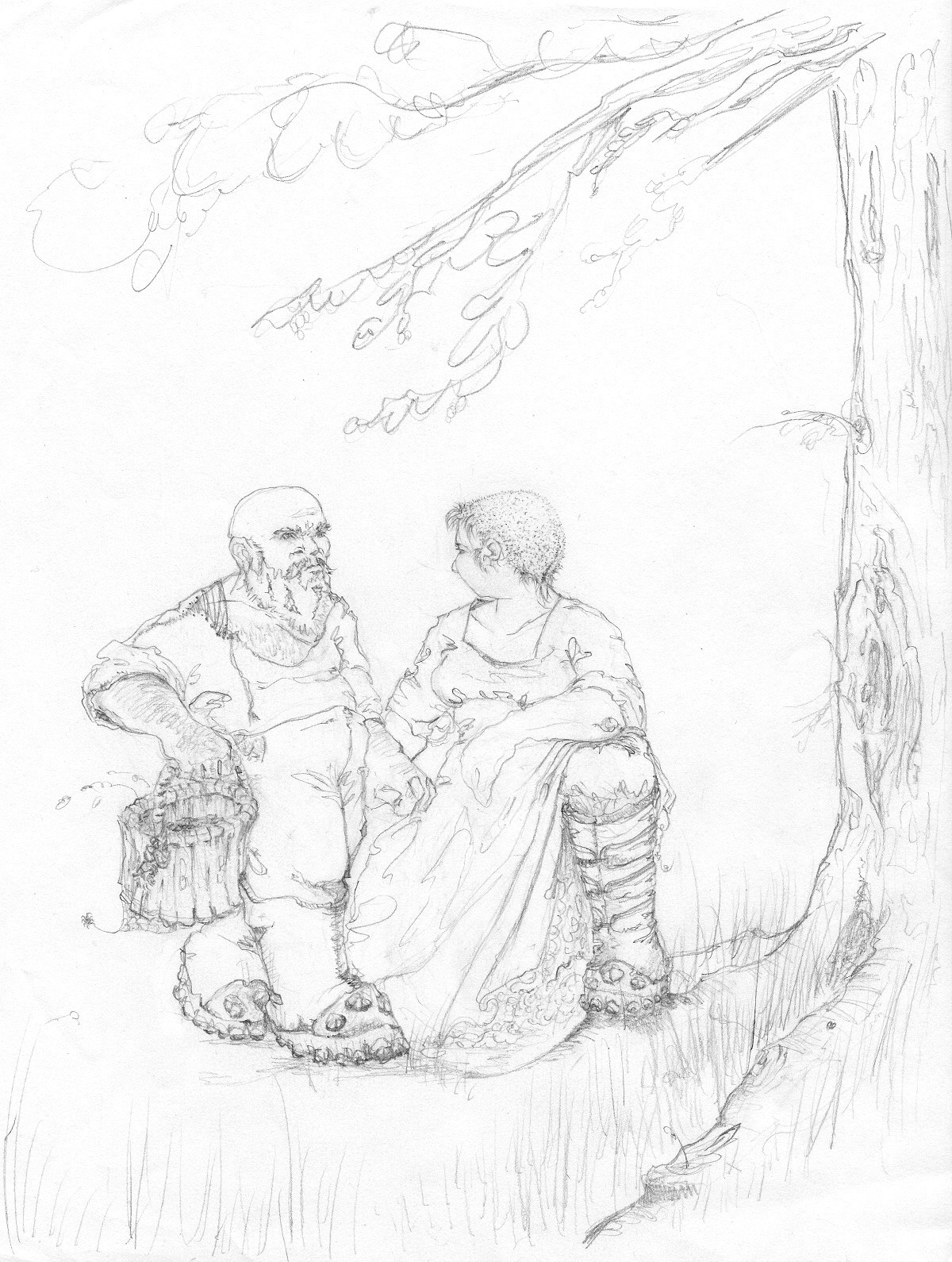
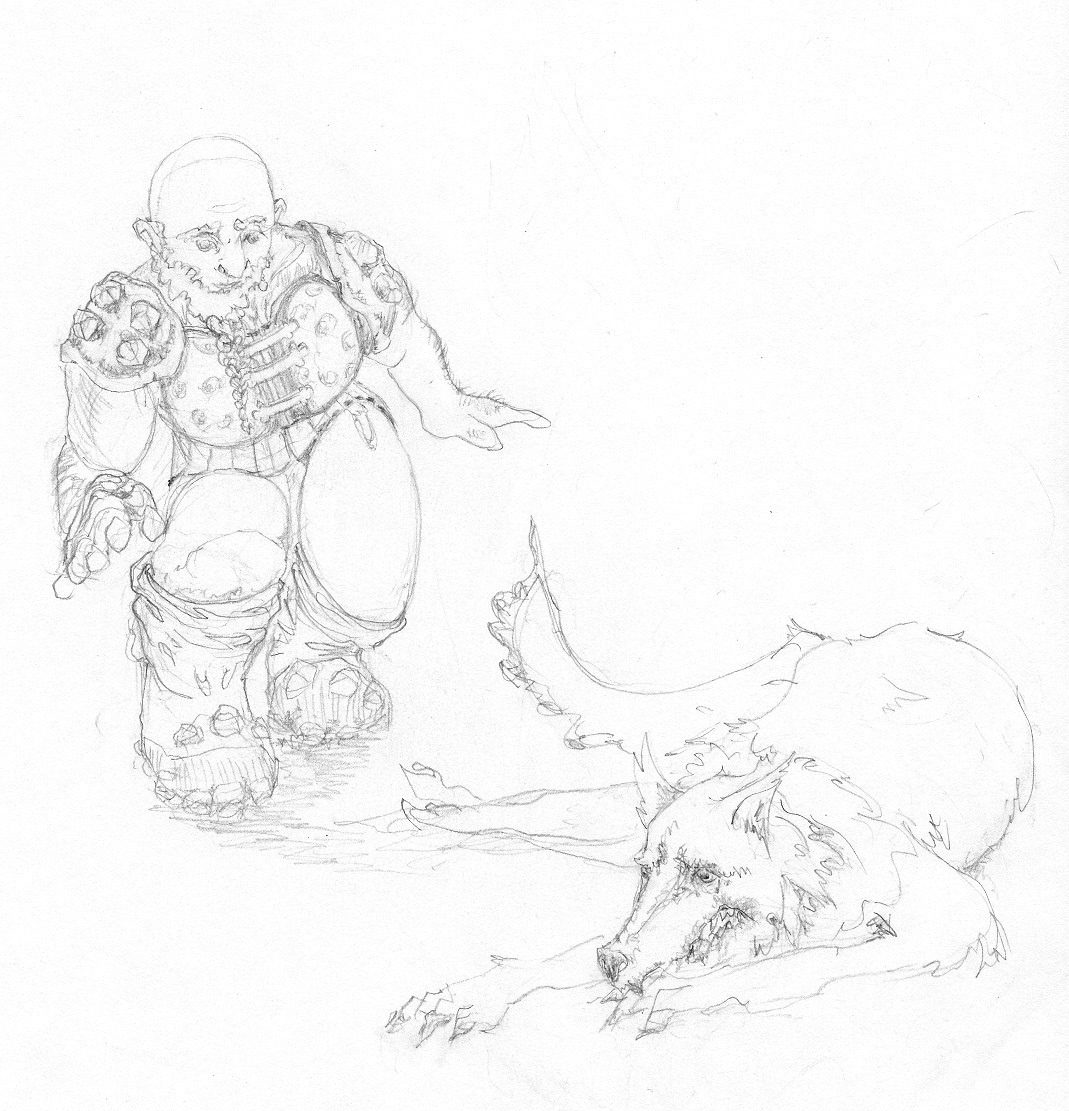
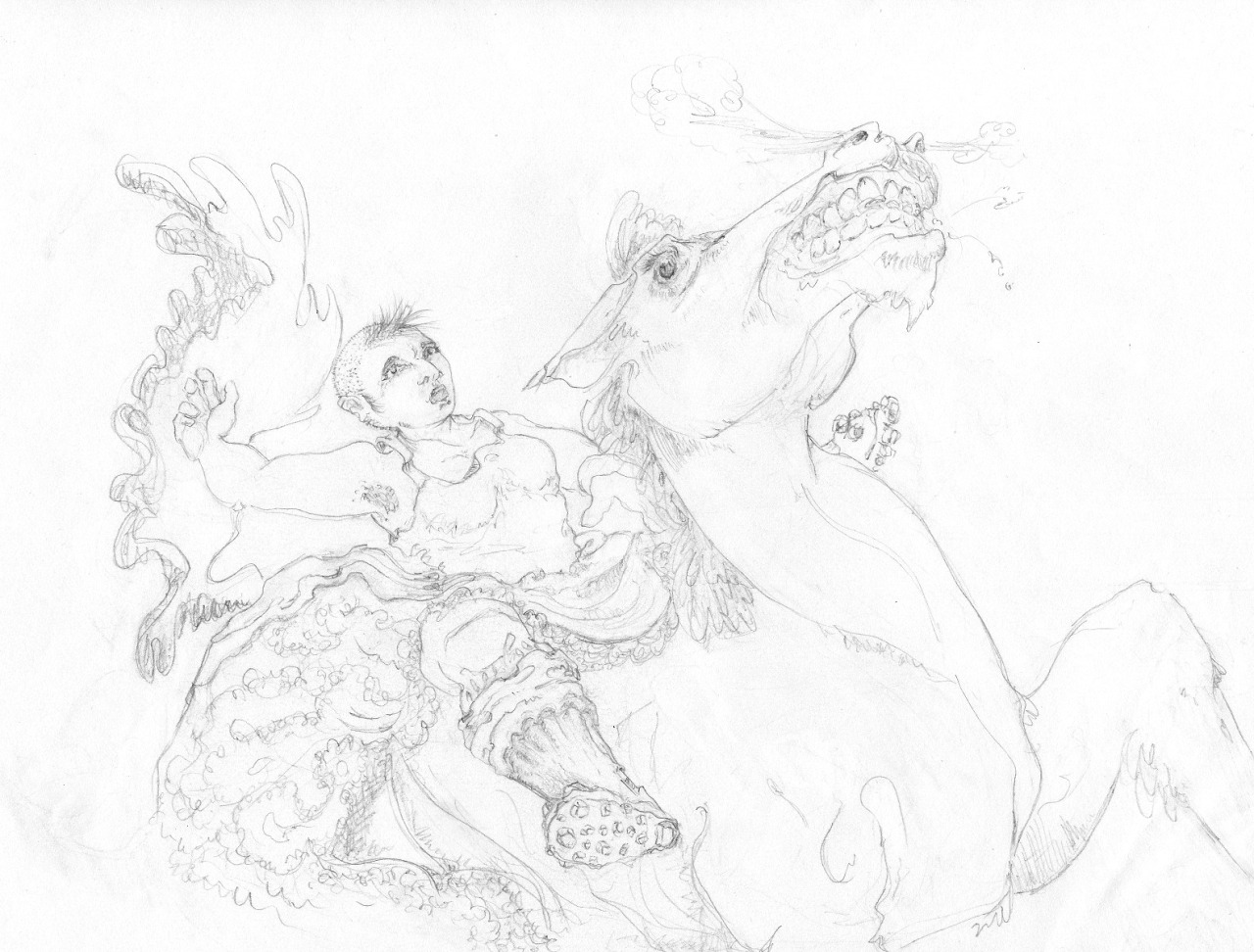

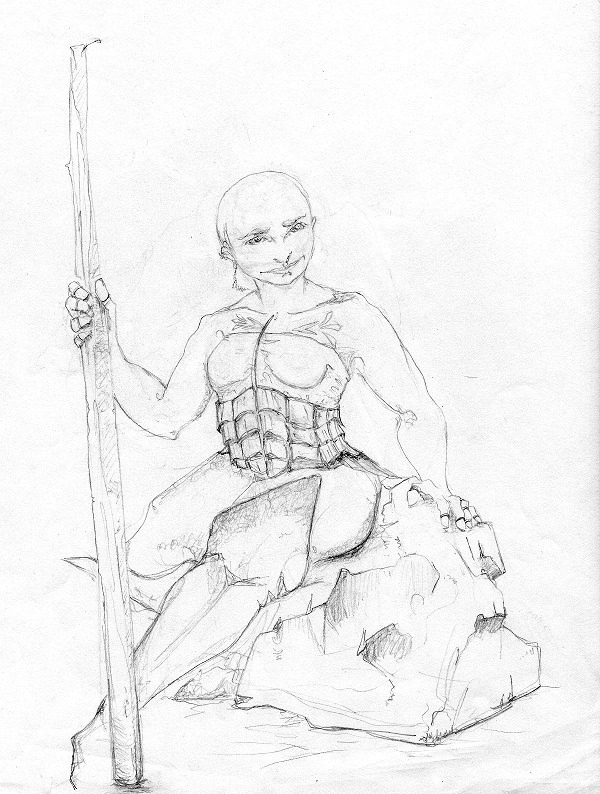

 The Sadhi are a secretive race, whose homeland is as much of a mystery as their innate powers of prophecy. They often sell their services predicting the weather, the gender or birthday of a child still in its mother's womb, or even how a market will fluctuate in price, but tend to avoid dispensing prophesies about deaths or the manner of those deaths. Most do not like using their ability to prophesy since many non-Sadhi want to know things that cannot be predicted, they ritualistically insist to non-Sadhi that they would be better off if the future was not known. The Sadhi cannot predict wars, murder, theft, or other crimes (or they simply refuse to), but they can see the natural causes of death like aging, illness, and disease. Their prophesies are mutable and with the proper knowledge can sometimes be prevented or changed. Sadhi insist that their powers are not magical or divine and they "simply see the world as it is." They are also extremely intelligent, and are often sought out by powerful rulers and wealthy merchants as consultants and advisors.
The Sadhi are a secretive race, whose homeland is as much of a mystery as their innate powers of prophecy. They often sell their services predicting the weather, the gender or birthday of a child still in its mother's womb, or even how a market will fluctuate in price, but tend to avoid dispensing prophesies about deaths or the manner of those deaths. Most do not like using their ability to prophesy since many non-Sadhi want to know things that cannot be predicted, they ritualistically insist to non-Sadhi that they would be better off if the future was not known. The Sadhi cannot predict wars, murder, theft, or other crimes (or they simply refuse to), but they can see the natural causes of death like aging, illness, and disease. Their prophesies are mutable and with the proper knowledge can sometimes be prevented or changed. Sadhi insist that their powers are not magical or divine and they "simply see the world as it is." They are also extremely intelligent, and are often sought out by powerful rulers and wealthy merchants as consultants and advisors. 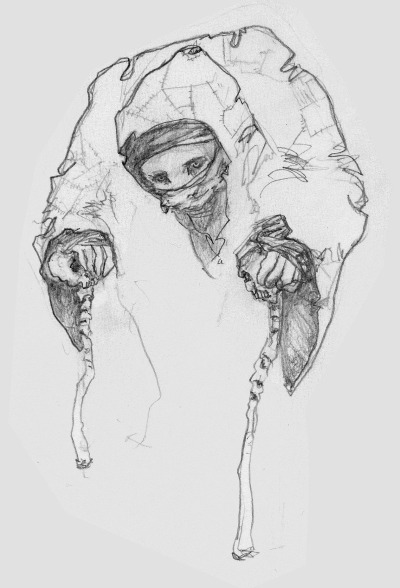 They have short, misshapen bodies which they conceal under heavy cloaks that resemble heaps of scrap cloth stitched together. It is thought that their skin is pale, almost white, but some claim they possibly dye or tattoo their skin and that it is actually black as pitch. Sadhi consider it offensive for a non-Sadhi to view their skin and those non-Sadhi who seek the view are regarded as vile. Their reflective yellow eyes are noticeably distinct, and often this is the only part of their bodies that others can see. If Sadhi regard having their naked skin seen by non-Sadhi as disgusting then being touched by a non-Sadhi is ten times worse. Sadhi will justify killing someone who touches them, or tries to uncover their skin. Many a foolish drunk has tried to rip the robe off of a lone Sadhi passing by on the street only to have been knifed for his attempt.
They have short, misshapen bodies which they conceal under heavy cloaks that resemble heaps of scrap cloth stitched together. It is thought that their skin is pale, almost white, but some claim they possibly dye or tattoo their skin and that it is actually black as pitch. Sadhi consider it offensive for a non-Sadhi to view their skin and those non-Sadhi who seek the view are regarded as vile. Their reflective yellow eyes are noticeably distinct, and often this is the only part of their bodies that others can see. If Sadhi regard having their naked skin seen by non-Sadhi as disgusting then being touched by a non-Sadhi is ten times worse. Sadhi will justify killing someone who touches them, or tries to uncover their skin. Many a foolish drunk has tried to rip the robe off of a lone Sadhi passing by on the street only to have been knifed for his attempt. 



